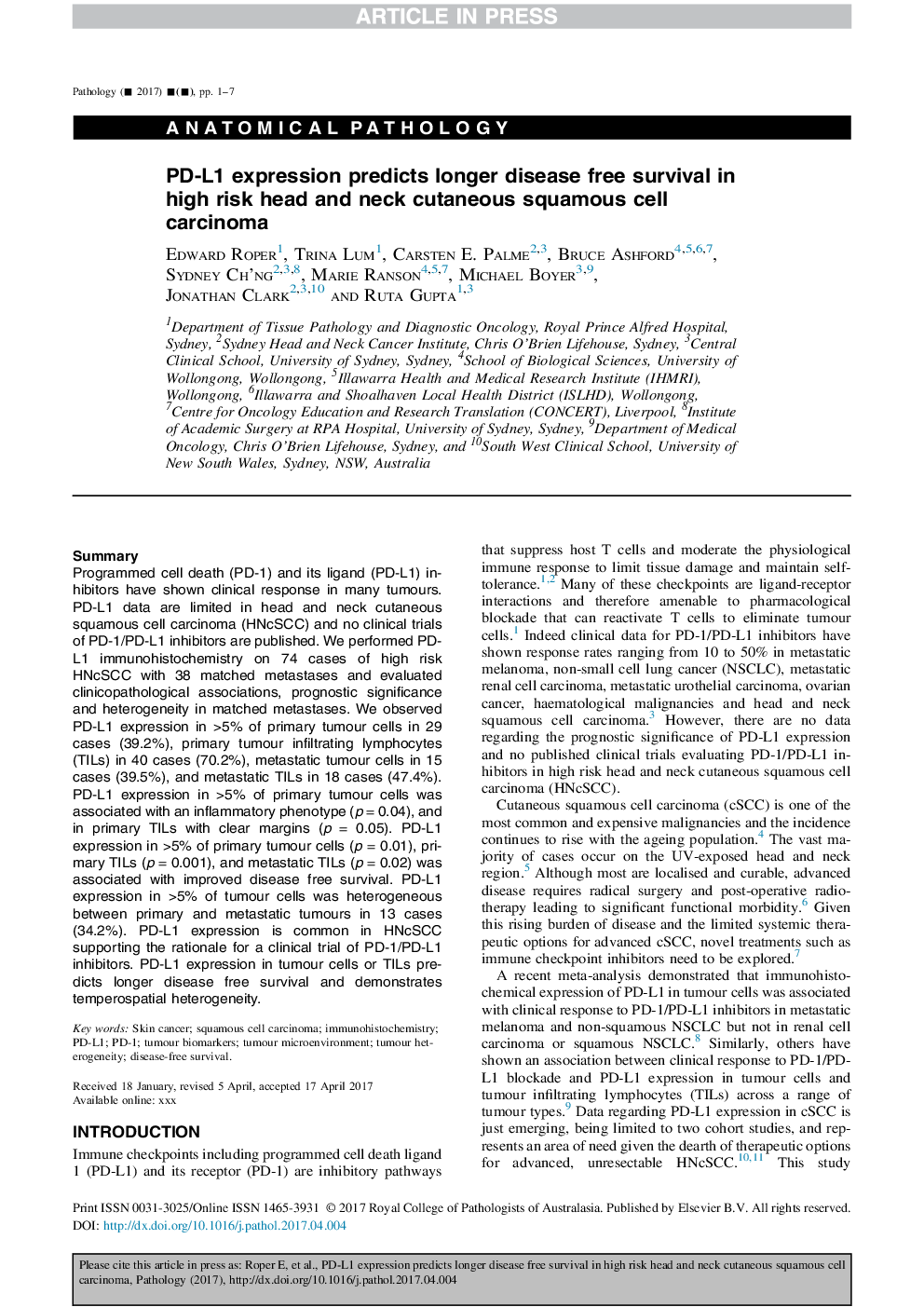| Article ID | Journal | Published Year | Pages | File Type |
|---|---|---|---|---|
| 4761047 | Pathology | 2017 | 7 Pages |
Abstract
Programmed cell death (PD-1) and its ligand (PD-L1) inhibitors have shown clinical response in many tumours. PD-L1 data are limited in head and neck cutaneous squamous cell carcinoma (HNcSCC) and no clinical trials of PD-1/PD-L1 inhibitors are published. We performed PD-L1 immunohistochemistry on 74 cases of high risk HNcSCC with 38 matched metastases and evaluated clinicopathological associations, prognostic significance and heterogeneity in matched metastases. We observed PD-L1 expression in >5% of primary tumour cells in 29 cases (39.2%), primary tumour infiltrating lymphocytes (TILs) in 40 cases (70.2%), metastatic tumour cells in 15 cases (39.5%), and metastatic TILs in 18 cases (47.4%). PD-L1 expression in >5% of primary tumour cells was associated with an inflammatory phenotype (p = 0.04), and in primary TILs with clear margins (p = 0.05). PD-L1 expression in >5% of primary tumour cells (p = 0.01), primary TILs (p = 0.001), and metastatic TILs (p = 0.02) was associated with improved disease free survival. PD-L1 expression in >5% of tumour cells was heterogeneous between primary and metastatic tumours in 13 cases (34.2%). PD-L1 expression is common in HNcSCC supporting the rationale for a clinical trial of PD-1/PD-L1 inhibitors. PD-L1 expression in tumour cells or TILs predicts longer disease free survival and demonstrates temperospatial heterogeneity.
Keywords
Related Topics
Health Sciences
Medicine and Dentistry
Forensic Medicine
Authors
Edward Roper, Trina Lum, Carsten E. Palme, Bruce Ashford, Sydney Ch'ng, Marie Ranson, Michael Boyer, Jonathan Clark, Ruta Gupta,
